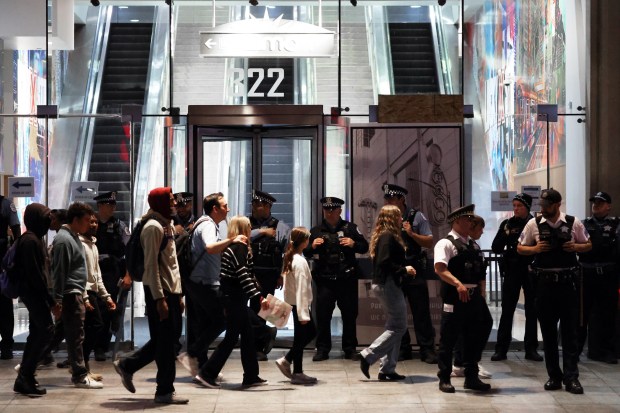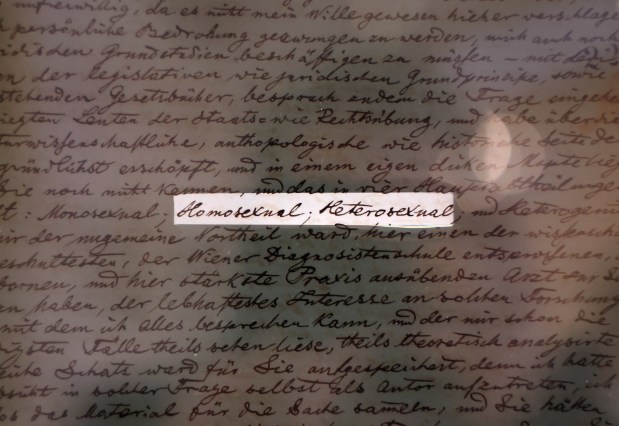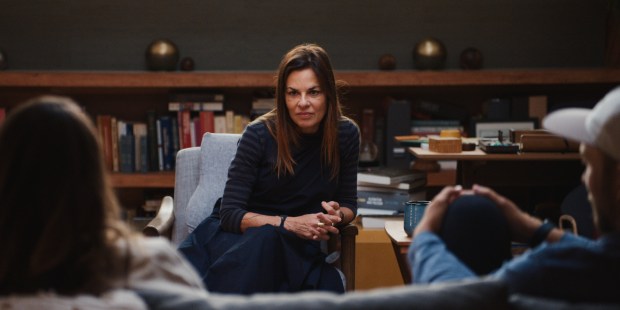Chicago aldermen advanced a measure Tuesday designed to curb so-called “teen takeovers” with curfews after the ordinance’s lead sponsor made a pivotal tweak to the measure.
Downtown Ald. Brian Hopkins substituted in a new version of his teen curfew ordinance that places the power to declare three-hour “snap curfews” targeting specific areas solely in the hands of Chicago’s police superintendent. He had previously proposed that curfew power be shared by the superintendent and the deputy mayor for community safety, requiring both to agree.
Aldermen in the Public Safety Committee Hopkins chairs voted 10 to 7 to send it to the full City Council, capping weeks of wrangling over the city’s curfew policy and whether giving police this new power will work to stop violence that has sometimes occurred at the teen gatherings.
The council could vote on the ordinance as soon as Wednesday.
Mayor Brandon Johnson has at times over the past several months said he opposes the idea of curfews in principle, but suggested he would allow officials to utilize the power to set temporary curfews to break up the large gatherings if the council passes the proposal.
Asked about it again before Tuesday’s Public Safety Committee meeting, Johnson said he would support a snap curfew measure “that gives my administration and the Police Department the ability to implement,” an apparent indication that he would prefer the earlier Hopkins plan that required Deputy Mayor Garien Gatewood to join Superintendent Larry Snelling in setting such a curfew.
But he also said he has concerns about the constitutionality of the Hopkins plan, a nod to groups like the American Civil Liberties Union and GoodKids MadCity that have suggested they believe the ordinance is unconstitutional and may sue if it passes.
Johnson spoke at a City Hall news conference alongside three young people involved in violence prevention and youth activism, each of whom highlighted the need for more investment in young people.
“If we don’t give young people real activity, we don’t help them find their purpose, we’re just going to find ourselves in a tailspin,” Johnson said.
As he has in the past, Johnson argued the city should be more focused on giving the city’s youth more opportunities to have safe fun and work opportunities to address underlying issues that lead to chaotic gatherings.
A Johnson spokesperson did not immediately respond after the Public Safety Committee vote when asked if the mayor plans to veto the curfew ordinance if it passes the full council.
Though the ordinance still requires the police superintendent to consult the deputy mayor, Hopkins’ tweak troubled some aldermen who fear the change removed critical oversight and concentrated too much power in the top cop’s hands.
“This goes above and beyond the original proposal,” said Ald. Jason Ervin, a former co-sponsor of the ordinance who removed his support Tuesday. “This gives the Police Department total discretion as to when and how this will be administered.”
The committee had previously voted down an effort to give the superintendent exclusive final say in one of several meetings focused on curfews.
But for some aldermen, with the symbolic Memorial Day start of summer just days away, the need to address the large teen gatherings that have twice ended in headline-grabbing violence this year was too pressing to continue to delay.
Ald. Pat Dowell, an initial lead co-sponsor of the ordinance alongside Hopkins and Ervin, said she remained in support and believes Snelling and his successors are well-equipped to declare curfews.
“That is what a superintendent is supposed to do, he runs the Police Department,” Dowell said. “Let’s move forward with this. If we don’t like it, we can always repeal it or reject it, but I think this is just one of many tools that we have.”
Following chaotic teen gatherings in his ward, Hopkins first proposed last year an 8 p.m. teen curfew exclusive to downtown that would have been two hours earlier than the city’s long-established, citywide 10 p.m. curfew. He pushed that same curfew ordinance forward in March after two more chaotic gatherings, but has shifted his focus to give police “snap curfew” powers that can be implemented ahead of time when authorities suspect teen gatherings will occur.
He argued Tuesday his altered ordinance does not shut out the deputy mayor from declaring curfews, but instead allows him to “maintain an integral part of the decision making process.” He wants the deputy mayor, a position inside the mayor’s office, to be “intimately involved” when curfews are considered, he added.
The substitute ordinance Hopkins presented Tuesday requires the superintendent to consult the deputy mayor whenever the superintendent has “probable cause to believe that a mass gathering will occur.” He said he shared the change with the committee’s aldermen Monday night and Tuesday morning.
Hopkins said he cannot envision any situation in which Snelling and Gatewood would disagree over a curfew, but believes the decision-making process needed to be clear.
“You have to have some measure in the ordinance to make it clear who the final decision making authority is, and clearly that needs to be the police superintendent,” he said after the vote.
Neither Snelling nor Gatewood attended the Tuesday afternoon meeting. Both men were appointed by Johnson.
Hopkins said Snelling’s office and the Chicago Police Department’s lawyers were in “unanimous agreement” that the change was necessary, a position that would put the superintendent at apparent odds with Johnson.





